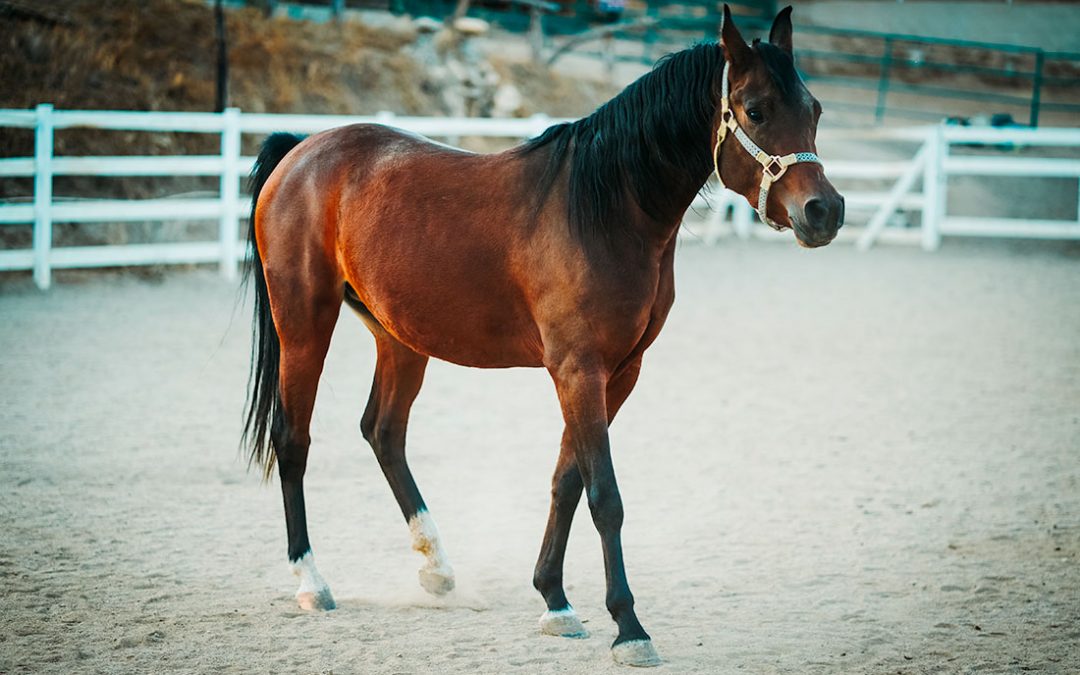When we talk about Foal Heat, it refers to the first estrus that the mare has after having a foal, and this species has the natural ability to conceive a new pregnancy in the first days after giving birth.
Estrus, also known as Heat, is the moment when the mare accepts the male and can reproduce; It lasts approximately 5 to 7 days on average.
According to Blanchard et al., 2003, the foal’s estrus takes place with normal follicular development and ovulation before twenty days postpartum; thus concluding how premature the first estrus is in mares after the birth of their foal.
According to Patrick M. McCue 2019, mares typically enter this state of heat six to eight days after foaling; The average between the day of delivery and ovulation being ten to twelve days, however, in some cases they can ovulate seven to eight days postpartum, or fourteen to fifteen days after delivery and it is considered clinically normal; The above suggests that we perform ultrasound monitoring before performing any service, to be able to verify if the mare has not yet ovulated.
When ovulation in the newly foaled mare occurs before the tenth day postpartum, they tend to have a lower pregnancy rate than when ovulation occurs after the tenth day. This being equally applicable to the rate of embryonic loss. Comment Brinsko et al., 2010; that the possible reason for the increased possibility of pregnancy after the tenth day is because histologically the endometrium has a normal appearance on the fourteenth day postpartum.
Objectives of the Foal’s Zeal
The objective of achieving a pregnancy at the so-called moment of heat of the foal is to be able to obtain an annual breeding from said mare; This is why it is important for some breeders to achieve a pregnancy as early as possible. If the mare is allowed to go through her first heat, then there will be two possibilities to serve her as soon as possible, one would be approximately 30 days post-partum when the mare comes with her second heat, or that on the 17th day post-partum she is administered a dose of prostaglandin to induce heat and bring it forward before day 30. Ultrasound monitoring is recommended to know the situation of the reproductive tract.
Knowing that a mare is close to her foaling date, the work team must prepare to check the birth, and from that moment on, analyze the possibilities of serving the mare in the first estrus.
One of the considerations that must be made to serve a recently foaled mare and know if it qualifies, is to be sure that she has had a normal birth, that is, that it has not been dystocic, that there has not been a retained placenta, or any type of bulbar secretions or exaggerated accumulation of fluid in the uterus.
There are various methodologies to increase the fertility rate in these cases of the early postpartum period. Three months before reaching term, the mares are exposed to artificial light; with the intention that they do not enter a state of ovarian inactivity.
There have also been practices in which progesterone is administered to postpartum mares with the intention of delaying the first ovulation and increasing the pregnancy rate; but the results have not been consistent enough.
On the other hand, focusing on maintaining a uterus in the best possible condition and without accumulation of fluids; Administrations of oxytocin or prostaglandins are carried out in order to increase uterine contractions and keep it without fluid. Uterine lavages are also other techniques used to try to increase the conception rate; seeking to provide an optimal uterine environment.
The pregnancy rate in these cases will depend on how the birth occurred; As mentioned above, there has not been any extraordinary event which puts at risk the uterine capacity for maternal recognition and thus provides an optimal environment for the embryo. You may have a lower fertility rate due to a failure to eliminate pathogens; by uterine involution or by service (Noakes et al., 2009).
When Foal Heat is used to serve the mare, there is normally a 10% to 20% lower probability of pregnancy than in heats following the first postpartum estrus. (Brinsko et al.,2010)
It is important to take all these parameters into account to make the right decisions; know the mare’s history, age, number of foals, etc. My recommendation is not to use Foal Heat to perform Artificial insemination with frozen semen or for an embryo transfer, since with these techniques the ideal is to do it at the time when there is the greatest possibility of success.
Veterinarian Eduardo Prado Carroz
University of Zulia, Faculty of Veterinary Sciences (FCV)
Member of the College of Veterinary Doctors of the state of Zulia, no. 2483
For those who may be interested, you can contact us through social networks, on Instagram as @espacio_equino


Recent Comments